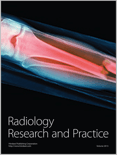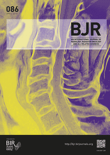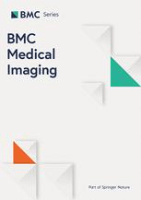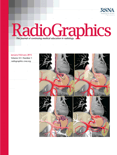
Radiology Research and Practice
Scope & Guideline
Transforming radiological sciences with collaborative insights.
Introduction
Aims and Scopes
- Innovative Imaging Techniques:
The journal emphasizes research on innovative imaging modalities, including CT, MRI, and ultrasound, that enhance diagnostic capabilities and improve patient care. - Application of Artificial Intelligence:
A significant focus is placed on the integration of artificial intelligence in radiology, exploring its impact on imaging analysis, workflow optimization, and diagnostic accuracy. - Public Health and Policy Implications:
Research often addresses the implications of radiological practices on public health, including the effects of the COVID-19 pandemic on imaging utilization and healthcare delivery. - Cross-Disciplinary Studies:
The journal promotes studies that intersect with other medical fields, such as sports medicine, cardiology, and oncology, demonstrating the multifaceted role of radiology in various health domains. - Patient-Centric Research:
A commitment to patient-centered approaches is evident, with studies focusing on improving diagnostic processes and outcomes for specific patient populations.
Trending and Emerging
- Impact of COVID-19 on Radiology:
A significant theme has emerged around the impact of the COVID-19 pandemic on radiological practices, including changes in imaging utilization and adaptations in workflow to address public health concerns. - Artificial Intelligence in Imaging:
The integration of artificial intelligence in radiology is rapidly gaining attention, with studies focusing on its applications in diagnostic imaging, workflow efficiencies, and patient outcome improvements. - Advanced Imaging Technologies:
There is an increasing focus on advanced imaging technologies, such as 3D imaging and image fusion techniques, which are becoming crucial for accurate diagnoses and treatment planning. - Interdisciplinary Collaboration:
Research highlighting collaborative approaches between radiology and other medical fields, such as sports medicine and oncology, is on the rise, reflecting a trend towards holistic patient care. - Patient Safety and Quality Improvement:
Emerging studies are focusing on patient safety and quality improvement in radiological practices, emphasizing the importance of optimizing imaging protocols and minimizing risks associated with imaging procedures.
Declining or Waning
- Traditional Imaging Techniques:
There appears to be a decreased emphasis on traditional imaging methods, as newer technologies and methodologies gain traction in research and clinical applications. - Conventional Radiography:
Research focusing solely on conventional radiography is less frequent, as studies increasingly integrate advanced imaging techniques or artificial intelligence for enhanced diagnostic capabilities. - Basic Epidemiological Studies:
There is a noticeable reduction in basic epidemiological studies related to radiology, possibly due to a shift toward more complex analyses that incorporate advanced technologies and multifactorial health considerations.
Similar Journals

Oral Radiology
Exploring the forefront of oral imaging advancements.Oral Radiology is a prestigious academic journal published by Springer, dedicated to advancing the field of dentistry and radiology through high-quality research and innovative findings. With a focus on oral imaging, it has established itself as a vital resource for researchers, clinicians, and students alike, striving to bridge the gap between cutting-edge imaging technologies and practical applications in oral health. Covering a diverse range of topics from 1985 to 2024, this journal not only holds a commendable Q2 ranking in both the Dentistry (miscellaneous) and Radiology, Nuclear Medicine and Imaging categories but also ranks impressively within the Scopus metrics, placing it among the top-tier publications in its field. While not an open-access journal, Oral Radiology remains a crucial platform for disseminating significant advances, influencing both academic research and clinical practices. Its rigorous peer-review process ensures that only the highest quality articles are published, making it an essential read for those seeking to stay at the forefront of oral radiological science.

BRITISH JOURNAL OF RADIOLOGY
Shaping the Future of Imaging through Rigorous ResearchBritish Journal of Radiology is a leading peer-reviewed journal published by the British Institute of Radiology, dedicated to advancing the field of radiology, nuclear medicine, and imaging. With a prestigious history dating back to 1945, this journal is at the forefront of disseminating cutting-edge research and innovations that significantly impact clinical practice. Currently enjoying a Q1 ranking in the field of radiology and Q2 in general medicine for 2023, it is recognized for its rigorous standards and high-quality content, ranking #87 out of 333 in Scopus for specialties related to Medicine, Radiology, Nuclear Medicine, and Imaging, placing it in the 74th percentile. Researchers, professionals, and students are encouraged to engage with the latest findings and comprehensive reviews presented within its pages, which contribute not only to academic discourse but also to the evolution of practice in the wider medical community.

BMC MEDICAL IMAGING
Innovating Diagnostic Practices Through Open Access Research.BMC Medical Imaging is a premier open-access journal dedicated to advancing the field of radiology, nuclear medicine, and imaging technologies. Published by BMC in the United Kingdom, this journal serves as a vital resource for researchers, clinicians, and students, fostering a collaborative environment for sharing innovative findings and methodologies in medical imaging. With a commendable impact factor and an impressive Scopus ranking within the top 35% of its category, BMC Medical Imaging provides a platform for high-quality research to be disseminated widely and freely since its inception in 2001. The journal aims to cover a diverse array of topics, from advanced imaging techniques to their clinical applications, enhancing the understanding and effectiveness of diagnostic practices. By contributing to the body of knowledge and facilitating open access to research, BMC Medical Imaging plays a pivotal role in shaping the future of medical imaging and improving patient care.

RADIOLOGIA
Illuminating the path of radiological advancements since 1961.RADIOLOGIA is a distinguished journal in the field of Radiology, Nuclear Medicine, and Imaging, published by Elsevier España. With a rich history since its inception in 1961, this journal serves as a vital resource for professionals, researchers, and students interested in the latest developments and innovations in radiological practices. Although it is currently categorized in the Q3 quartile, its contributions continue to shape and advance clinical practices and research in radiology. RADIOLOGIA provides a platform for scholarly articles, reviews, and case studies that underpin the complexities of imaging techniques and nuclear medicine, while also addressing emerging trends and technologies. The journal is indexed with the ISSN 0033-8338 and E-ISSN 1578-178X, reflecting its accessibility to a global audience dedicated to enhancing patient care through advanced imaging methodologies. Readers can find the journal published in Spain and benefit from its commitment to disseminating pertinent research across diverse aspects of radiology.

Clinical Neuroradiology
Transforming Clinical Practice through Cutting-edge Imaging.Clinical Neuroradiology, published by SPRINGER HEIDELBERG, is a leading journal in the fields of neurology and radiology, focusing on the intersection of clinical practice and cutting-edge imaging technologies. With an impressive impact factor and categorized within Q2 in Neurology (clinical) and Q1 in Radiology, Nuclear Medicine and Imaging, this journal is positioned at the forefront of scientific discourse, facilitating high-quality research dissemination from its origins in 2000 through to 2024. Situated in Germany, Clinical Neuroradiology provides a platform for researchers, professionals, and students to explore the latest advancements and insights in neuroimaging, ensuring that its readership remains at the vanguard of clinical practice. While it does not offer open access, the journal remains committed to fostering a vibrant academic community dedicated to enhancing patient care through innovative neuroradiological techniques and findings.

RADIOGRAPHICS
Leading the Way in Radiographic DiscoveriesRADIOGRAPHICS, published by the Radiological Society of North America (RSNA), is a premier academic journal dedicated to the field of radiology, nuclear medicine, and imaging. With an impressive impact factor and recognition in the top quartile (Q1) of both Medicine (miscellaneous) and Radiology, Nuclear Medicine and Imaging categories, RADIOGRAPHICS stands out as a leading platform for disseminating high-quality research and clinical findings. Since its inception in 1985 and projected to run until 2024, the journal has consistently provided essential insights into cutting-edge imaging techniques and advancements in radiological practices, making it invaluable for professionals, researchers, and students alike. Although it does not offer open access, the journal continues to flourish with a robust reputation, ranked 35th in its field according to Scopus, placing it within the 89th percentile of its category. With an unwavering commitment to enhancing the understanding and application of radiological sciences, RADIOGRAPHICS remains a pivotal resource for advancing knowledge and expertise within the medical community.

AMERICAN JOURNAL OF ROENTGENOLOGY
Empowering Healthcare through Imaging Knowledge.AMERICAN JOURNAL OF ROENTGENOLOGY (AJR), published by the American Roentgen Ray Society, stands as a beacon of excellence in the fields of Radiology, Nuclear Medicine, and Imaging. With an impressive impact factor positioning it in the Q1 category of both Medicine (Miscellaneous) and Radiology as of 2023, AJR is ranked 13th out of 333 journals in its category, reflecting its prominent presence and high relevance in advancing medical imaging knowledge and practice. Established in 1973 and continuing through to 2024, the journal encompasses a broad spectrum of research, critical reviews, and innovative techniques, making it a vital resource for researchers, healthcare professionals, and students alike. Although it does not currently offer open access options, AJR ensures that its rigorous, peer-reviewed content remains accessible to a global audience committed to the evolution of radiological science. With its home base in Leesburg, Virginia, AJR not only informs but also inspires advancements in radiology, enhancing diagnostic practices and patient care globally.

Chinese Journal of Academic Radiology
Advancing Radiological Science through Innovative ResearchChinese Journal of Academic Radiology is a leading publication in the field of Radiology, Nuclear Medicine, and Imaging, published by SpringerNature. With an ISSN of 2520-8985 and E-ISSN 2520-8993, the journal aims to bridge the gap between academic research and practical application in radiological sciences. Recognized for its contributions to the advancement of imaging technology and patient care, it currently holds a Q3 quartile ranking for 2023. The journal has a commitment to sharing innovative research findings that address pressing challenges in the field, thereby fostering collaboration and knowledge exchange among researchers, professionals, and students. Although it does not currently offer open access options, the journal's comprehensive reviews and high-quality research articles present a significant resource for those seeking to deepen their understanding of radiological practices and innovations. The Chinese Journal of Academic Radiology continues to play a vital role in shaping the future of radiological science through rigorous scholarship and global discourse.

SA Journal of Radiology
Elevating Standards: Your Source for Cutting-Edge Radiology ResearchThe SA Journal of Radiology is a prominent open-access journal published by AOSIS, dedicated to advancing knowledge in the fields of Radiology and Ultrasound Technology. Established in 2004, this South African journal provides a platform for researchers, professionals, and students to disseminate valuable findings and share innovative practices in medical imaging. With an ISSN of 1027-202X and an E-ISSN of 2078-6778, the journal has become an important resource for those involved in radiological sciences, despite currently holding a Q4 ranking in both Radiological and Ultrasound Technology and Radiology, Nuclear Medicine and Imaging categories. Covering a converged time span from 2014 to 2024, the journal aims to promote scholarly communication and enhance the accessibility of research, positioning itself as a key player in the global radiological community. In a landscape where open access is increasingly critical, the SA Journal of Radiology is committed to fostering research collaboration and facilitating the exchange of ideas among clinicians and academics alike.

Acta Radiologica Open
Pioneering open science in the realm of imaging.Acta Radiologica Open is an esteemed open-access journal published by SAGE Publications Ltd, dedicated to advancing the field of radiology. Since its inception in 2012, the journal has been a vital platform for researchers, professionals, and students to disseminate and access high-quality, peer-reviewed research in radiological science. With a focus on innovative imaging techniques, clinical advancements, and interdisciplinary approaches, Acta Radiologica Open plays a crucial role in bridging the gap between theoretical knowledge and practical application. The journal contributes significantly to the body of literature by promoting open science and facilitating global collaboration among researchers. Readers can readily access a diverse range of articles that not only highlight emerging trends but also address key challenges in the field, making it an indispensable resource for anyone involved in radiological research and practice.